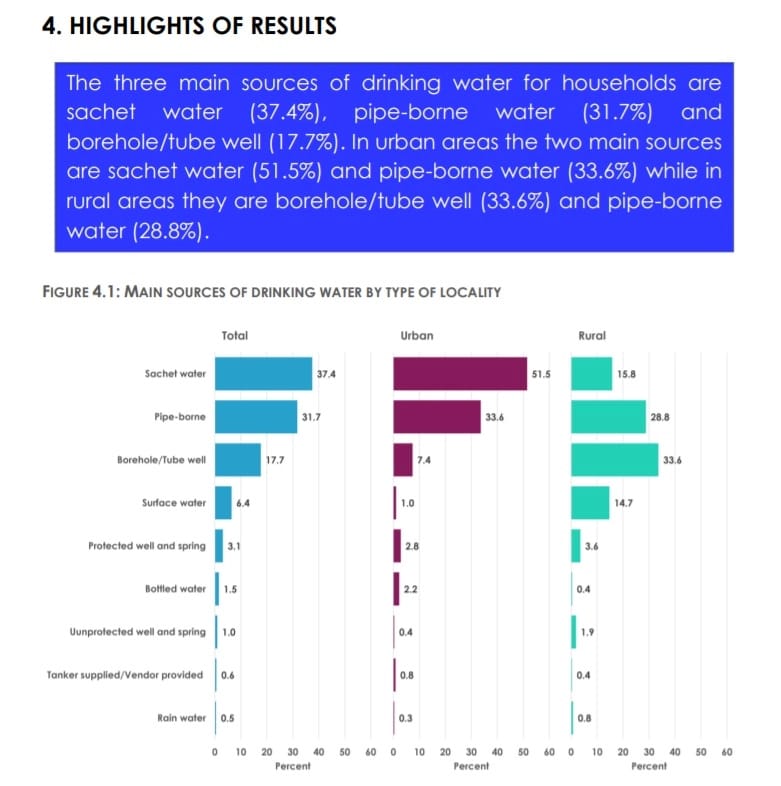The Ghana Statistical Service has disclosed that sachet water is the main source of drinking water in the country, following the 2021 Population and Housing Census (PHC) exercise conducted.
It said, sachet water use rose to 37.4 per cent in 2021 from nine per cent in 2010, while pipe-borne water fell to 31.7 per cent from 46.5 per cent during the same period.
Presenting the report of the Census on Water and Sanitation on Thursday, February 24, 2022, Professor Samuel Kobina Annim, said borehole or tube well water recorded a figure of 17.7 per cent in 2021 and 23.2 per cent for the 2010 Census figures.
According to him, in the urban areas, the two main sources are sachet water, recording 51.5 per cent and pipe-borne water with 33.6 per cent, while the rural areas have borehole or tube well with 33.6 per cent and pipe-borne water recording 28.8 per cent.
The data also indicated that the use of sachet water as the main source of drinking water was largely an urban phenomenon (51.5%). It is the most used source of drinking water in Greater Accra (70.7%) and the least in North East (1.8%), Upper East (2.2%) and Upper West (2.6%) regions.
Below is the data from the Ghana Statistical Service

The 2021 PHC counted and collected detailed information on all persons that spent the Census Night, on Sunday, June 27, 2021 in Ghana, and ended the exercise on August 15, 2021.
The provisional figures from the 2021 PHC indicate that there are 30.8 million people in Ghana, compared to 24.7 million people recorded in the 2010 Census.




































































